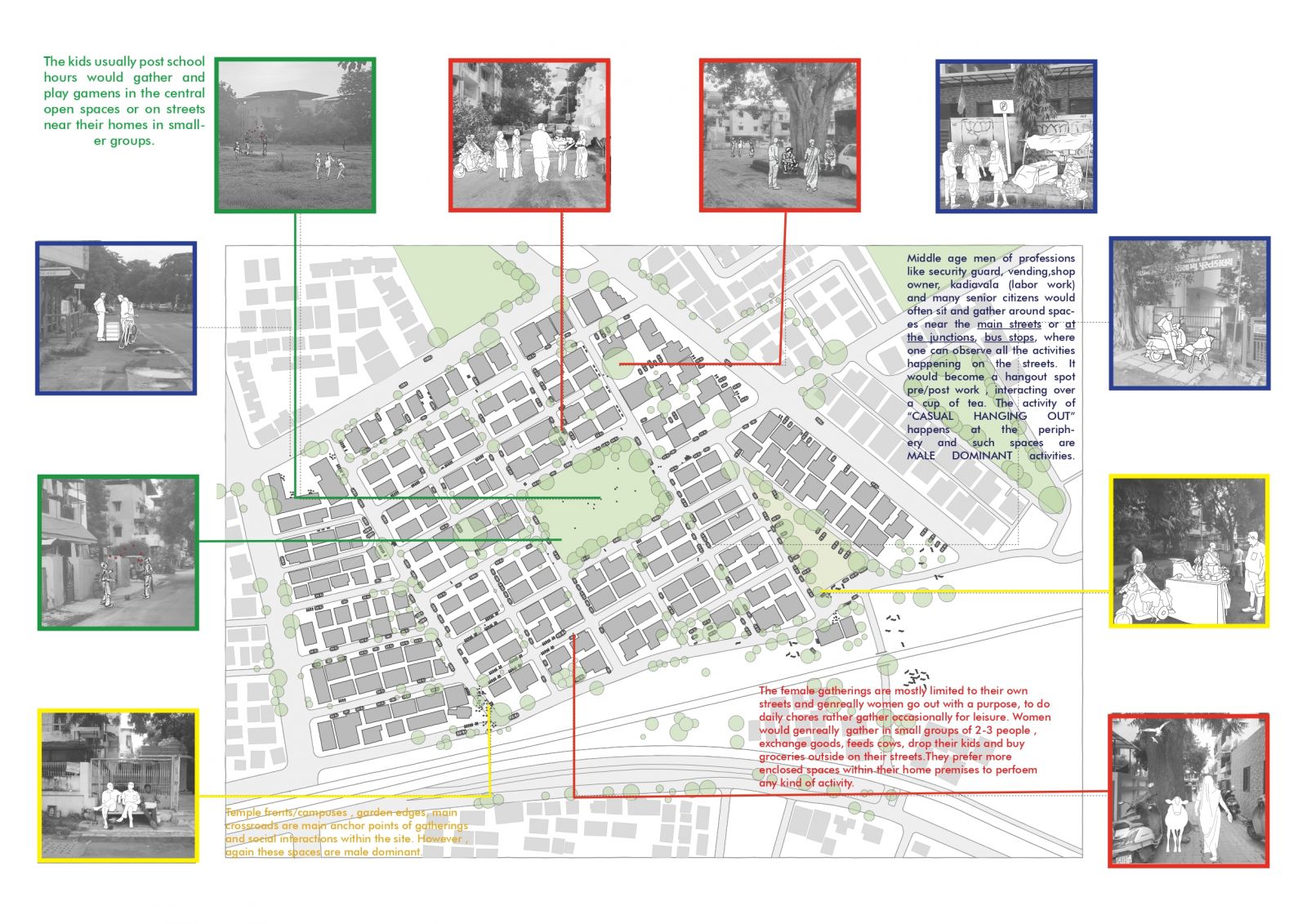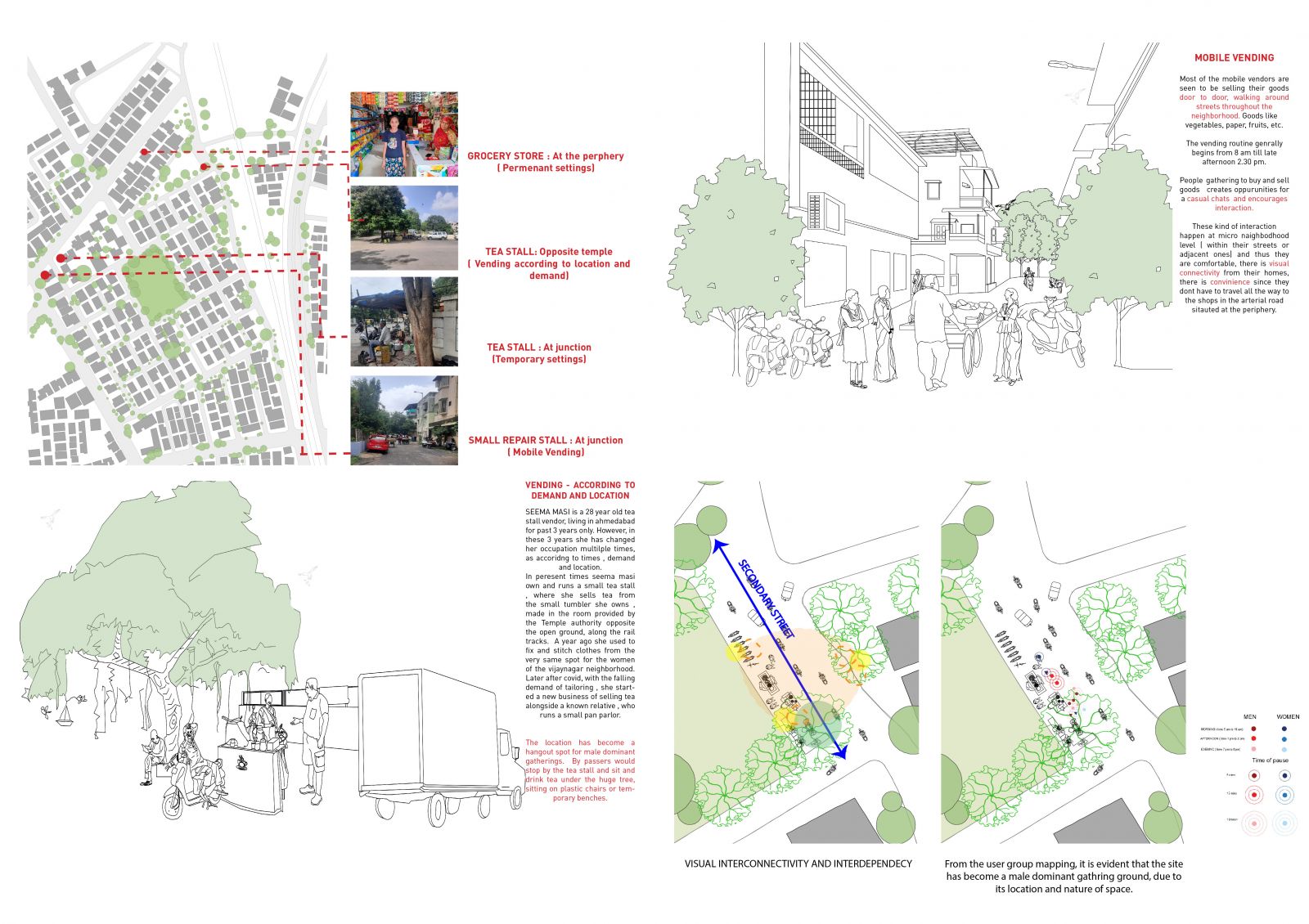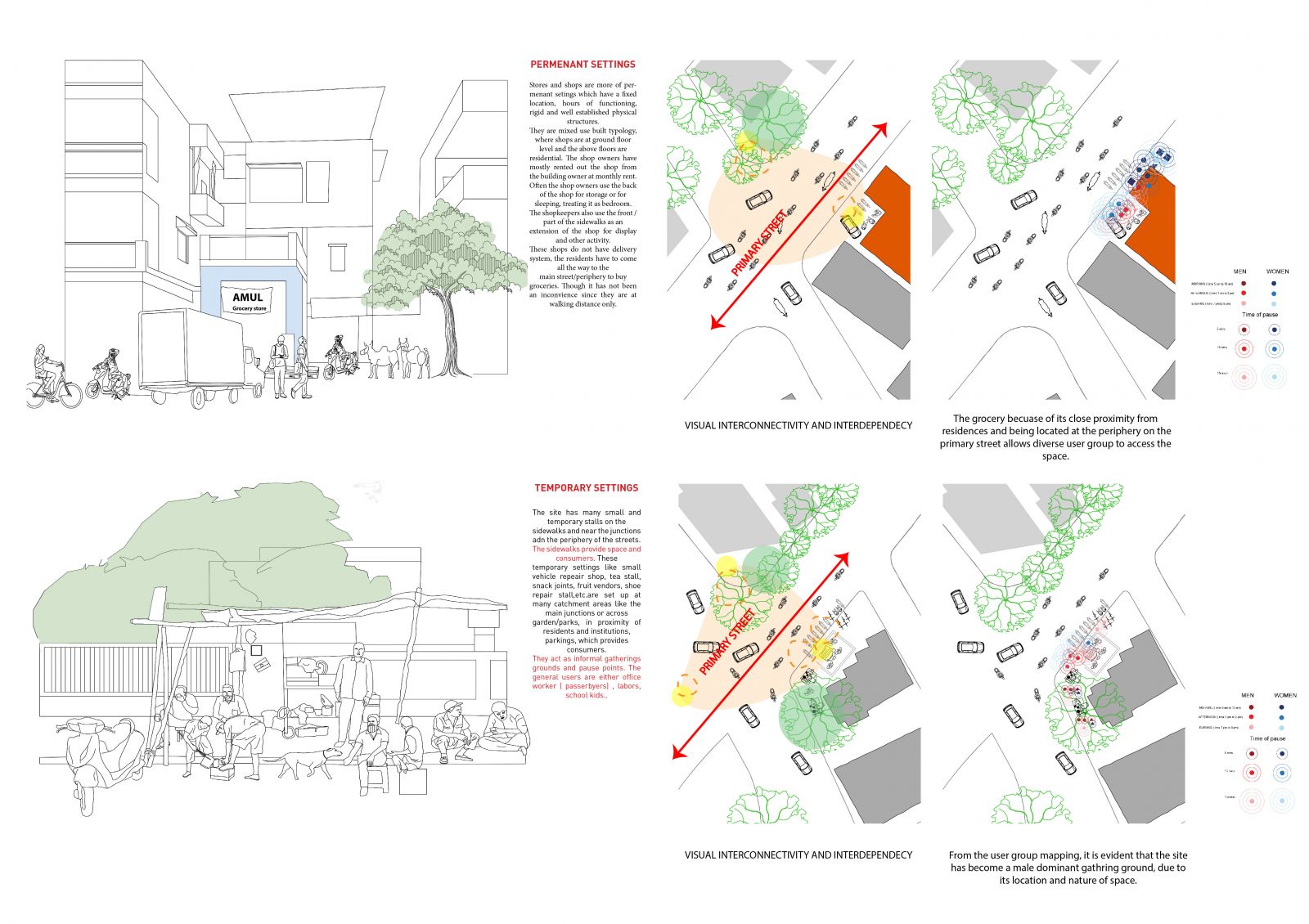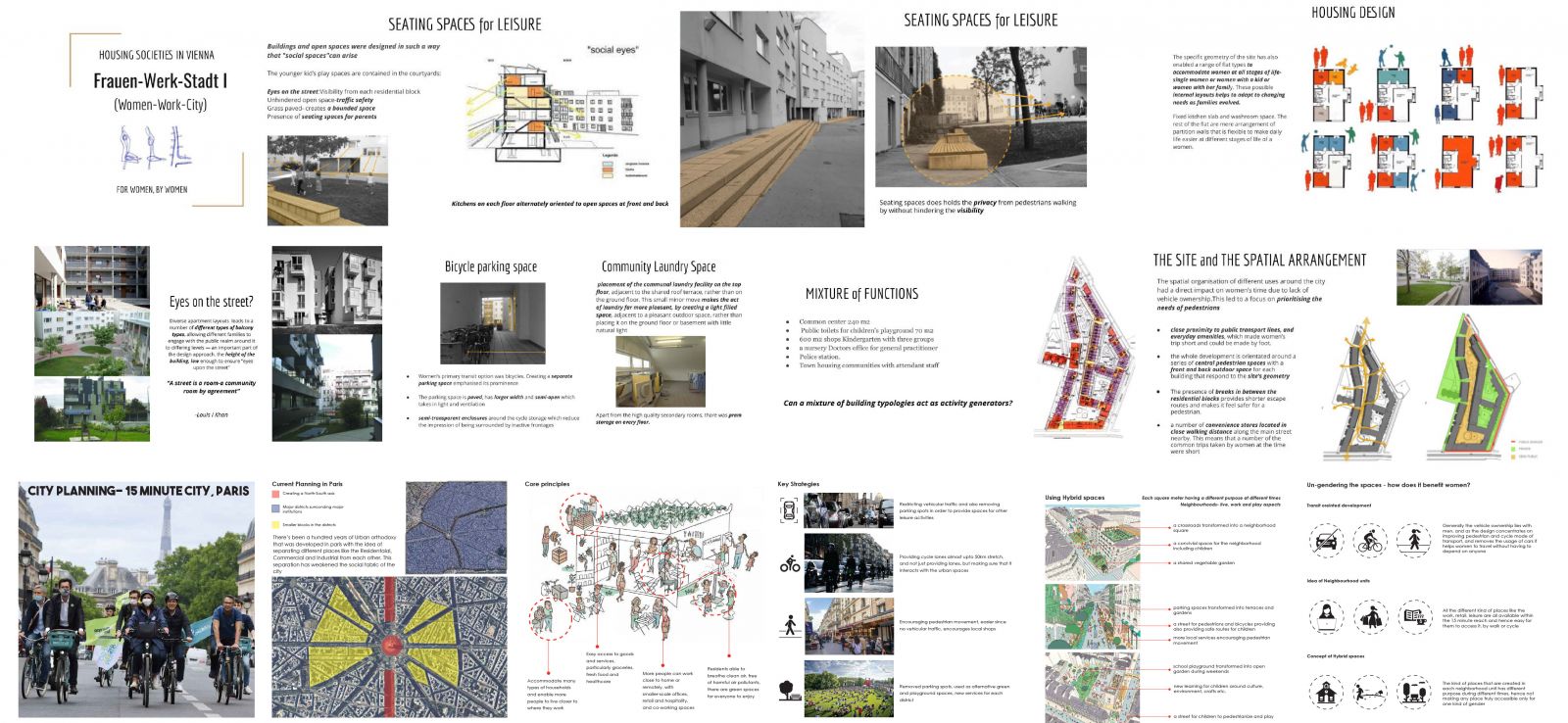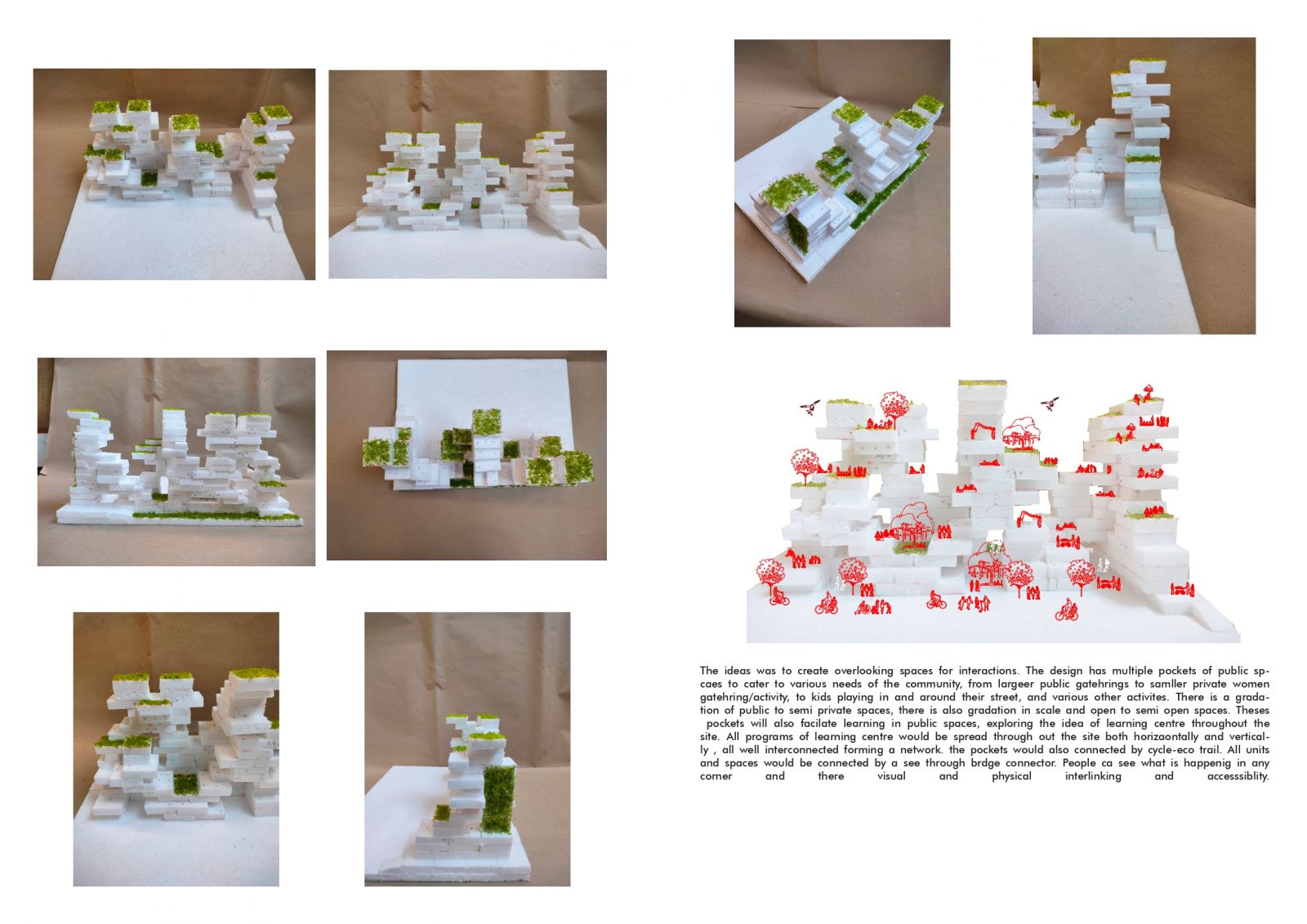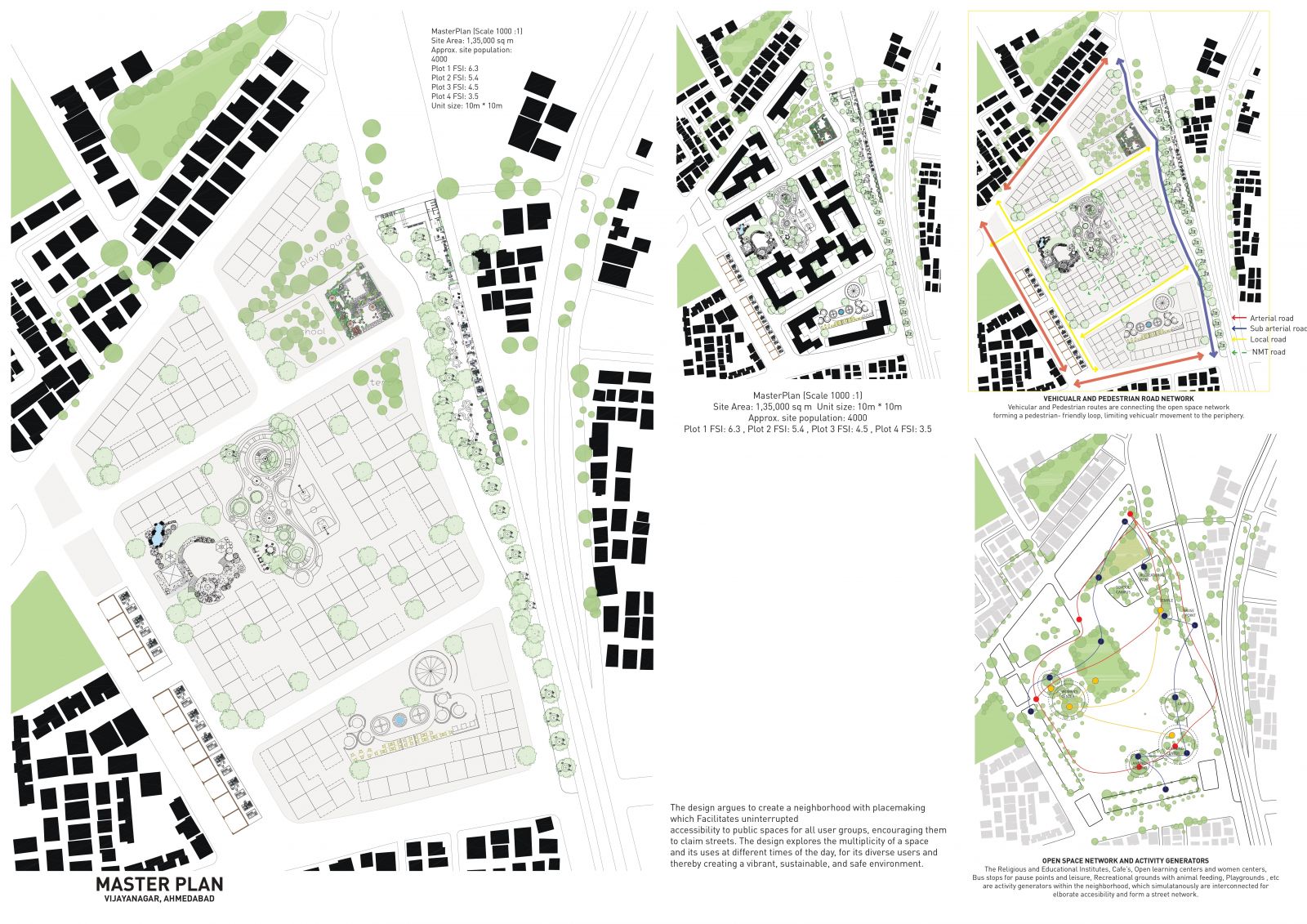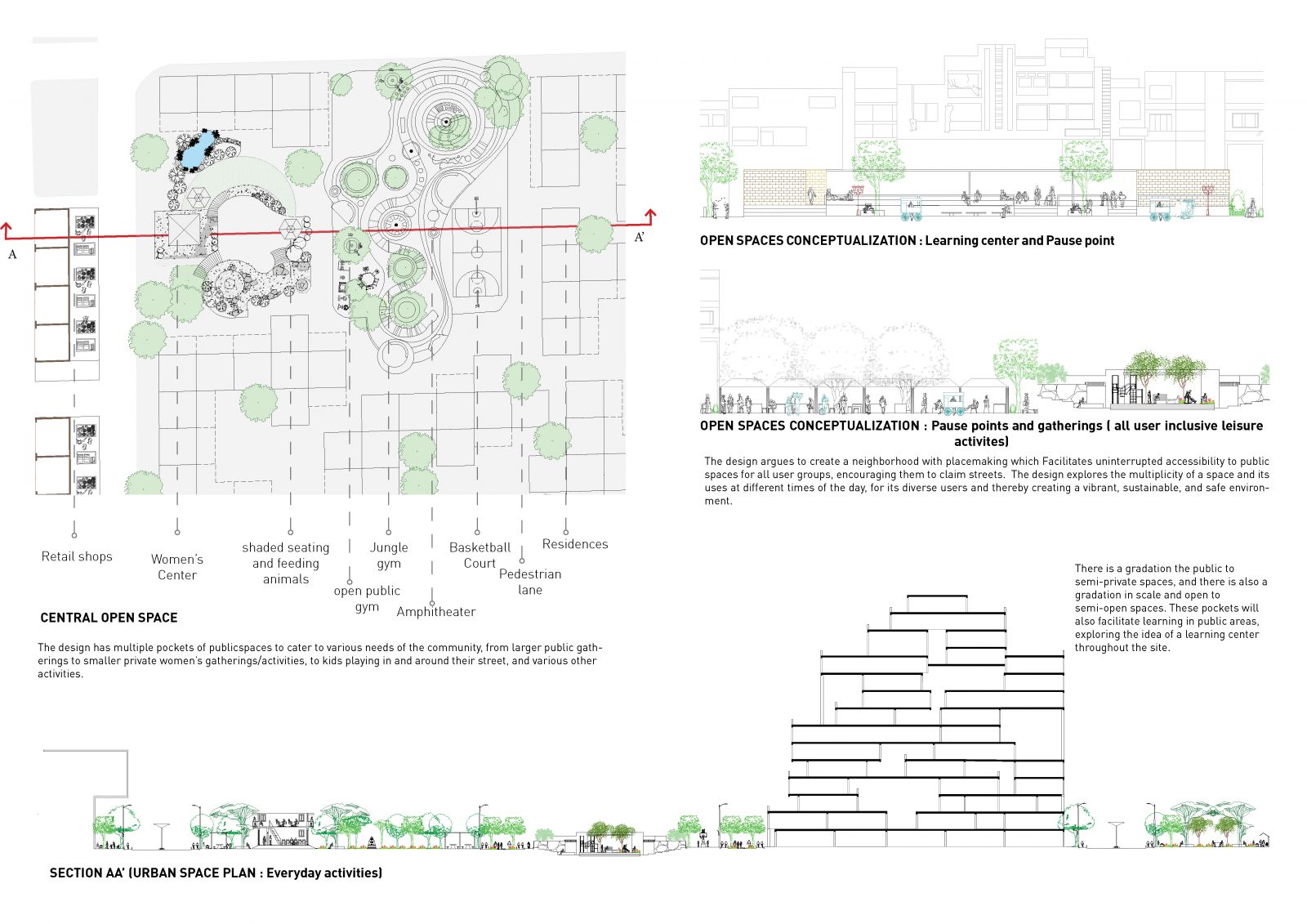Your browser is out-of-date!
For a richer surfing experience on our website, please update your browser. Update my browser now!
For a richer surfing experience on our website, please update your browser. Update my browser now!
Today’s cities are chaotic, inaccessible, gendered, unsafe, suffocating, depressing, and lifeless concrete jungles. The human dimension is missing. Streets are not only for walking, but they can also accommodate numerous activities if well designed and maintained, all user group friendly, and inclusive. There is a lack of critical analysis of human behavior. People’s behavior is strongly influenced by various elements of the built environment including, spatial allocations, access to nature, lighting, and time. The design argues for creating a neighborhood in which placemaking Facilitates uninterrupted accessibility to public spaces for all user groups, encouraging them to claim streets. The design explores the multiplicity of spaces and their uses at different times of the day, for its diverse users and thereby creating a vibrant, sustainable, and safe environment. The project allows organic movement within the neighborhood with enough pause points to engage the users. Inclusion rather than segregation in terms of the use of spaces provides more opportunities for interactions and activities. Places are to commute and communicate with known and unknown people.
View Additional Work